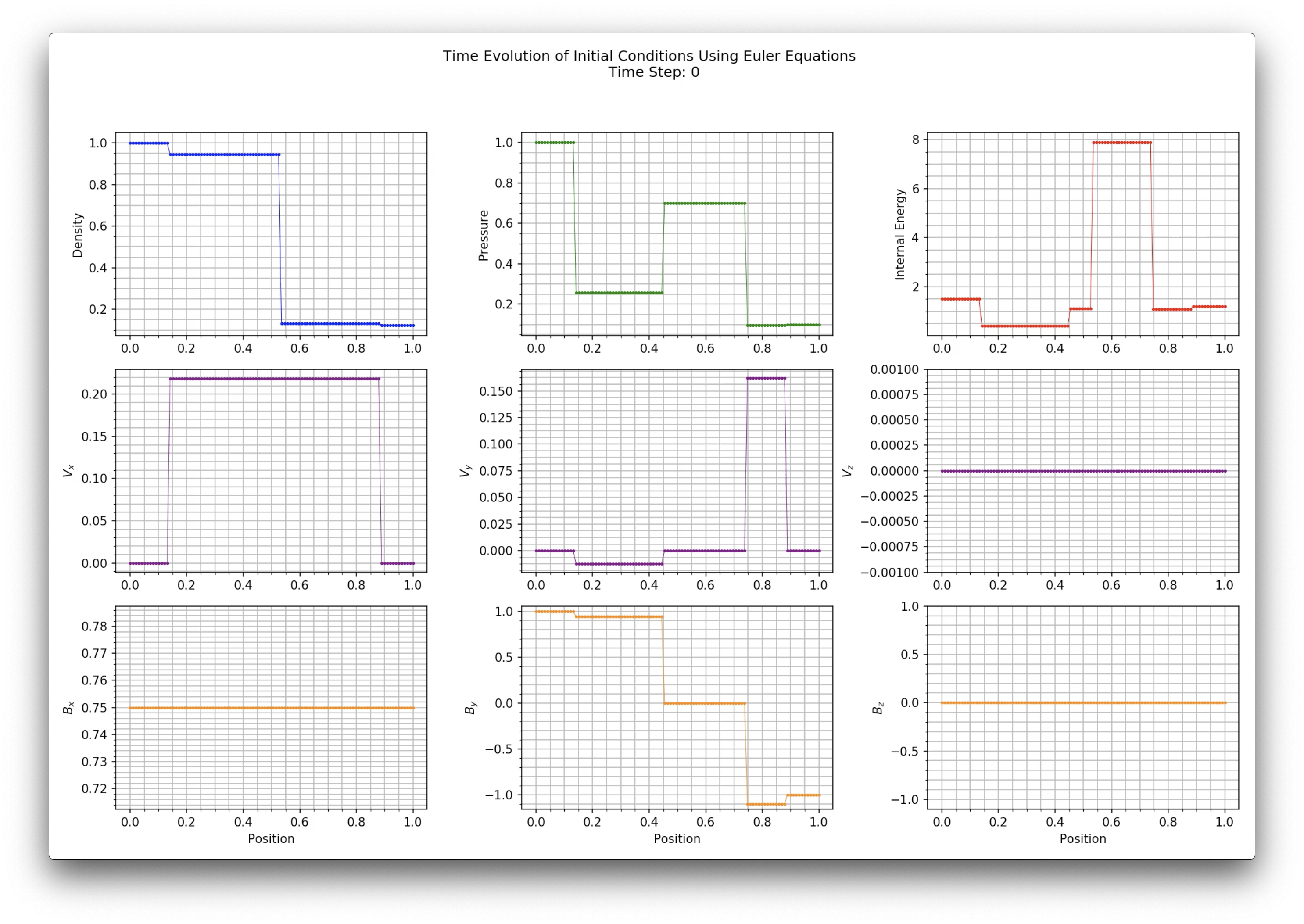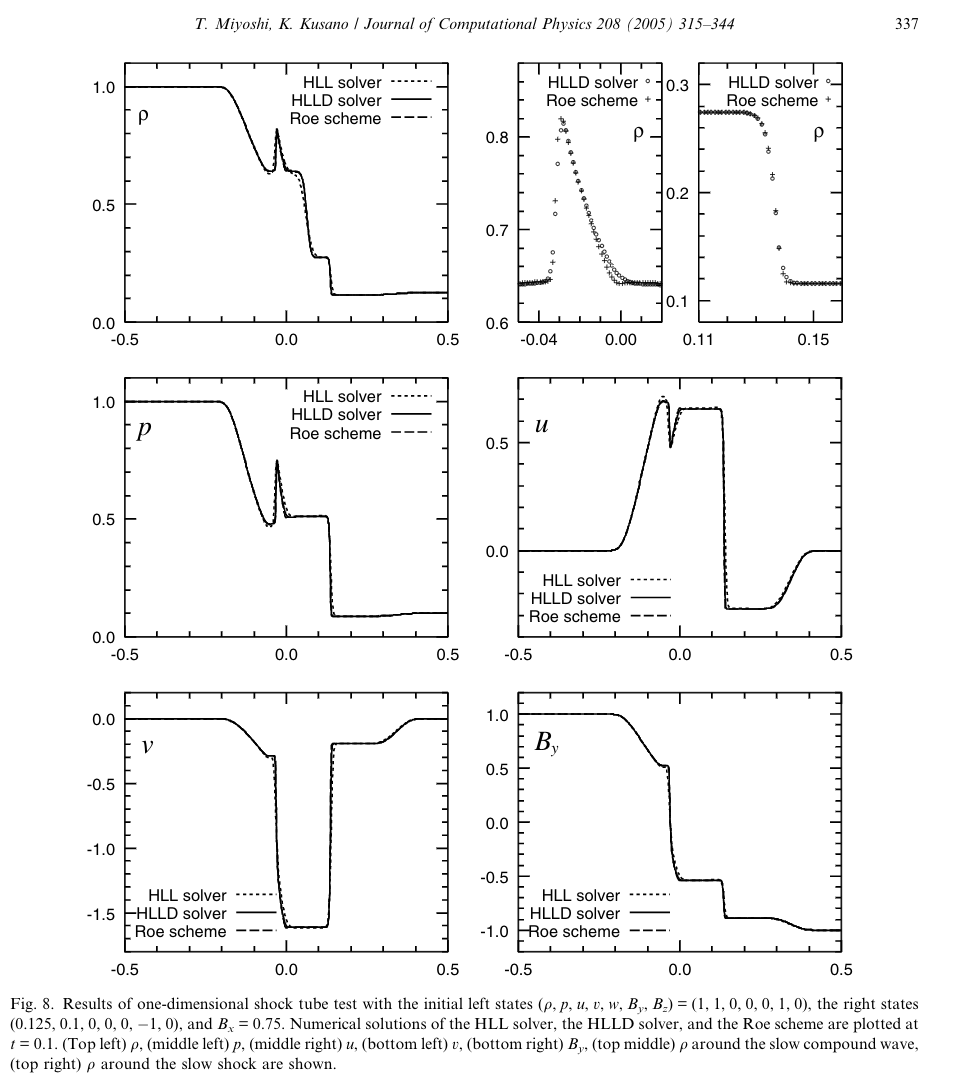Sandbox HLLD Debugging and Exam
General Relativity (GR)
We started on Black Holes this week and had a midterm exam. It went well but studying for it took a lot of time.
HLLD Solver
As of last week I finished writing the HLLD solver so I spent part of last week and the first few days of this week writing the tools I need for testing and debugging. I updated my visualizer program for MHD and 3D hydro and updated my Riemann tester to test the HLLD solver using the MHD shock tubes from Brio & Wu 1988 and Dai & Woodward 1994. Both contain slow magnetosonic waves that the HLLD solver doesn’t resolve so I am hoping that between the two of them I can test the HLLD solver independently of the VL+CT integrator.
To test the HLLD solver I have been running it on it’s own (without any interface reconstruction) by feeding it the interface states and a position divided by time value. This should trace out all the characteristics except the slow magnetosonic wave since the HLLD solver doesn’t include it. However, unlike a full simulation no rarefaction fans or other gradual features will be resolved, they will just look like discontinuities. Below you can see the results of running the current version of my code compared to the fiducial plots from Miyoshi & Kusano 2005. The little spike near the center and the wave near 0.1 are slow magnetosonic waves so we don’t expect to resolve them until I’m running a full simulation. As you can see the waves appear to be in the right spots but there are clearly bugs that are preventing the HLLD solver from getting the correct values in each state. Finding and fixing those is my next goal.
 The current output of my HLLD solver using the Brio & Wu MHD shock tube with \( \gamma = 5/3 \)
The current output of my HLLD solver using the Brio & Wu MHD shock tube with \( \gamma = 5/3 \)
 The fiducial version of the shock tube from Miyoshi & Kusano 2005
The fiducial version of the shock tube from Miyoshi & Kusano 2005
Useful links
Original HLLD paper: Miyoshi & Kusano 2005
Blog post on the HLLD Algorithm: HLLD Algorithm
Original VL+CT paper: Stone & Gardiner 2009